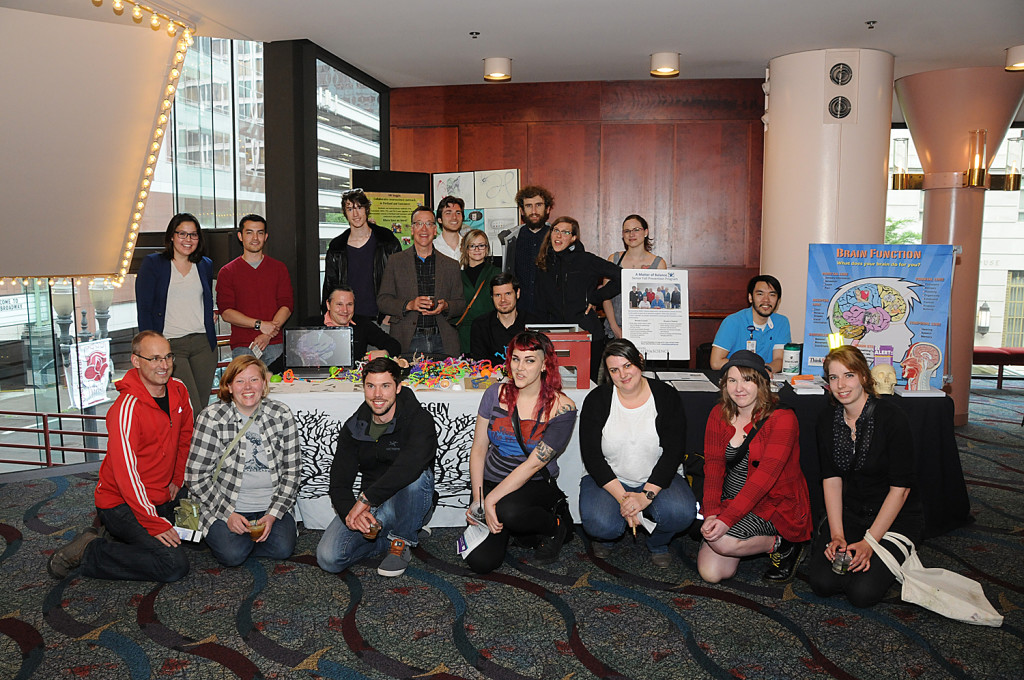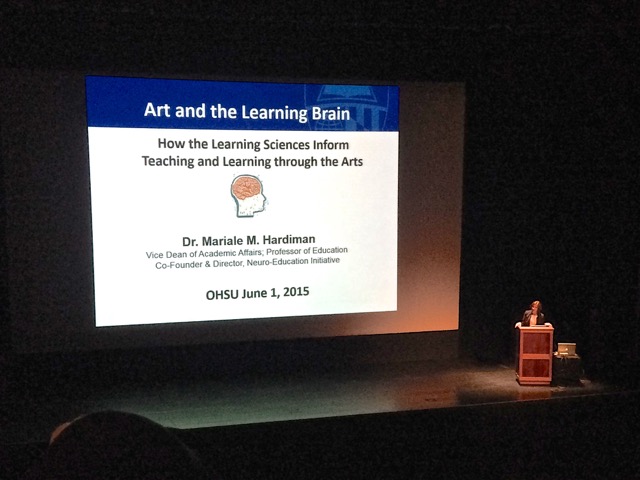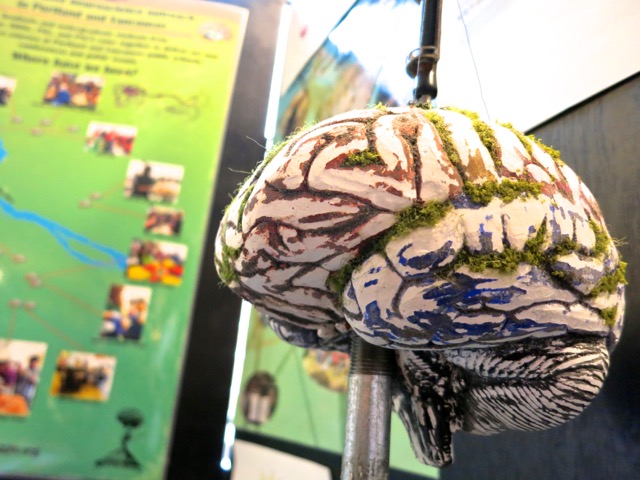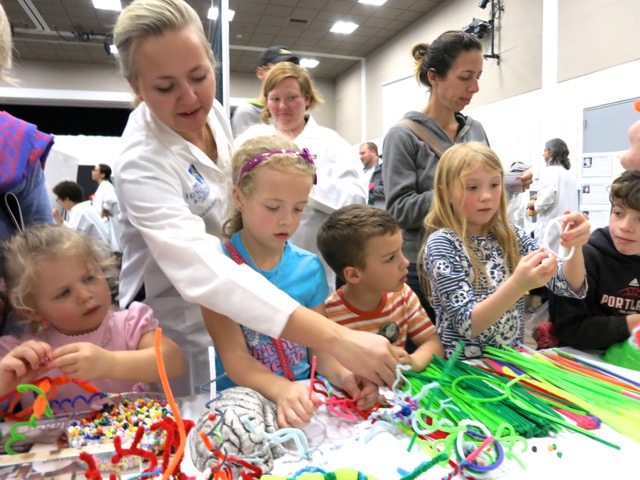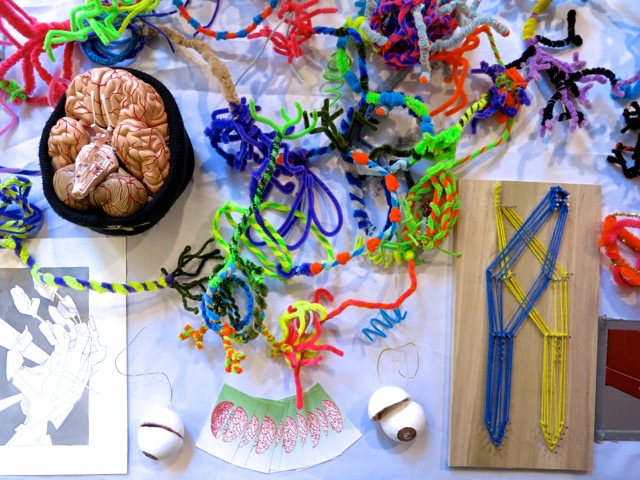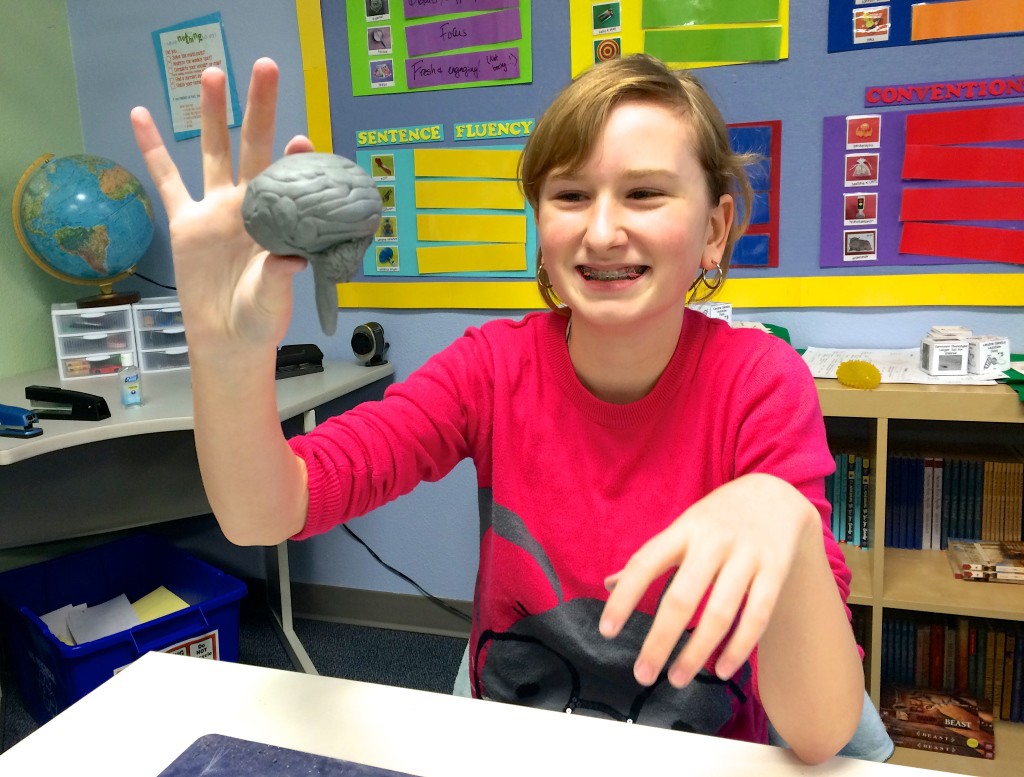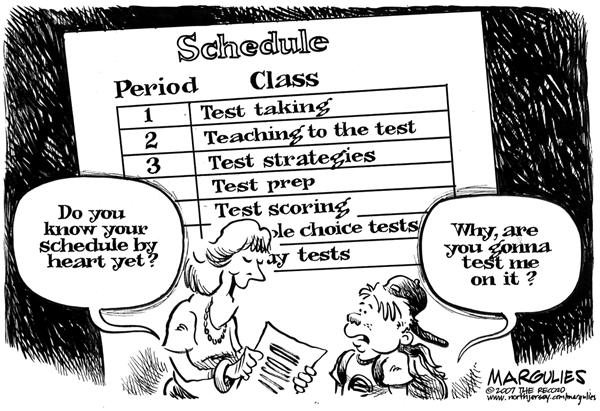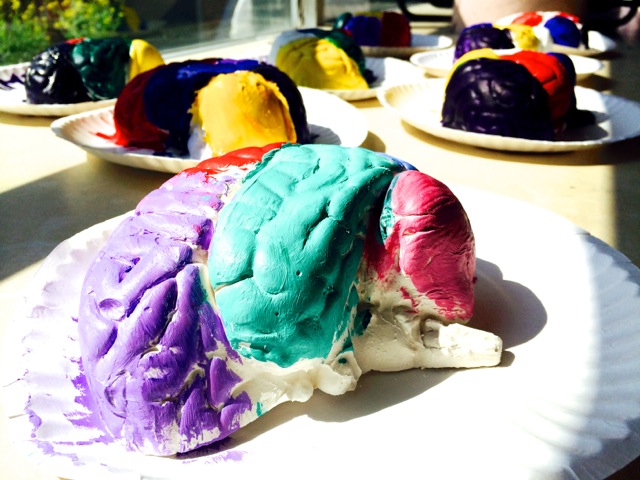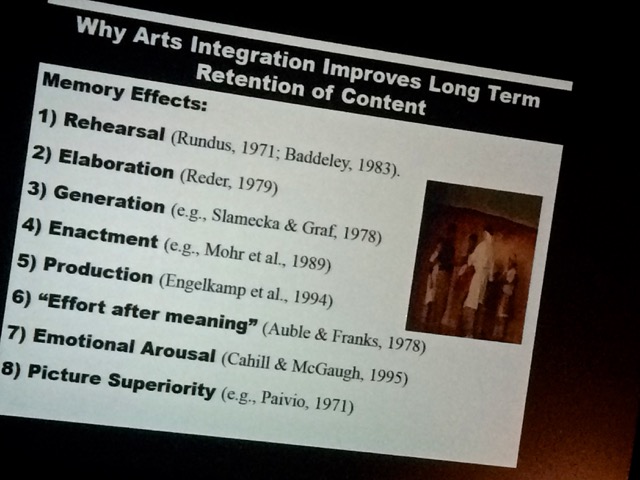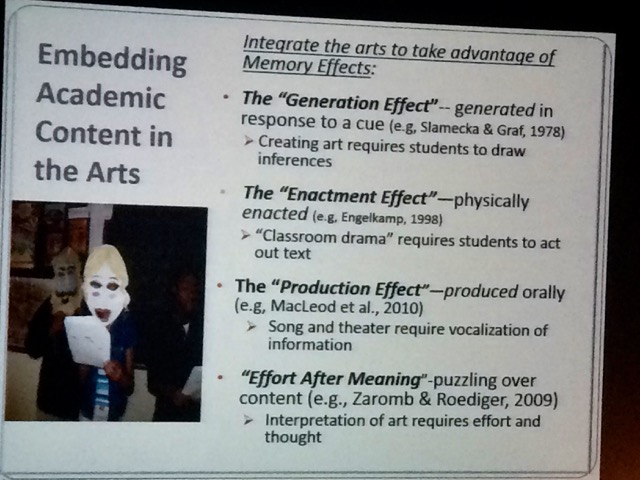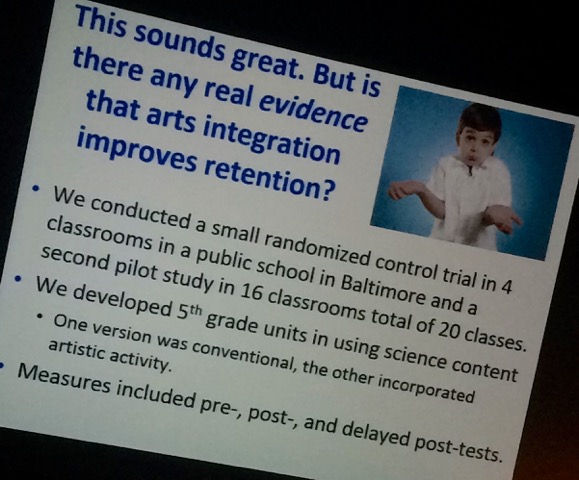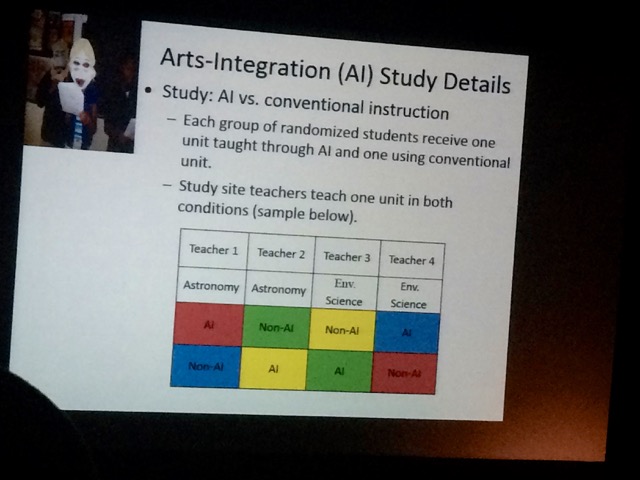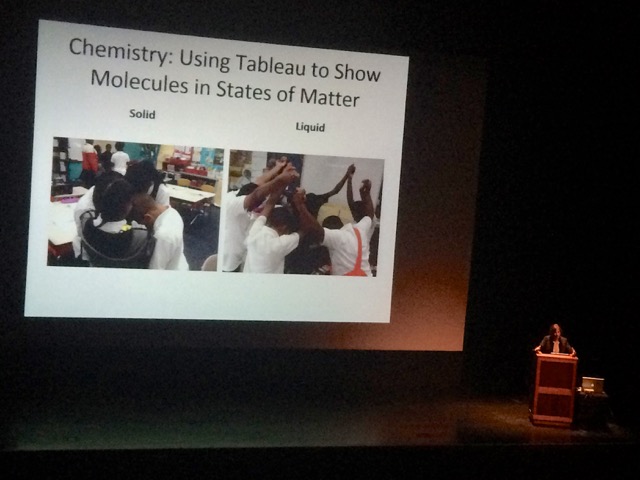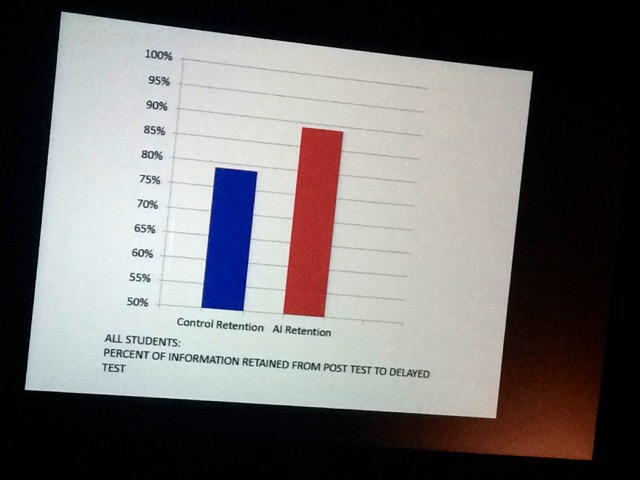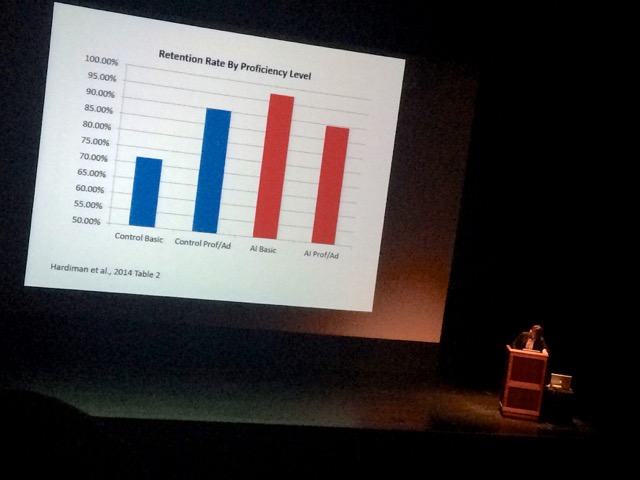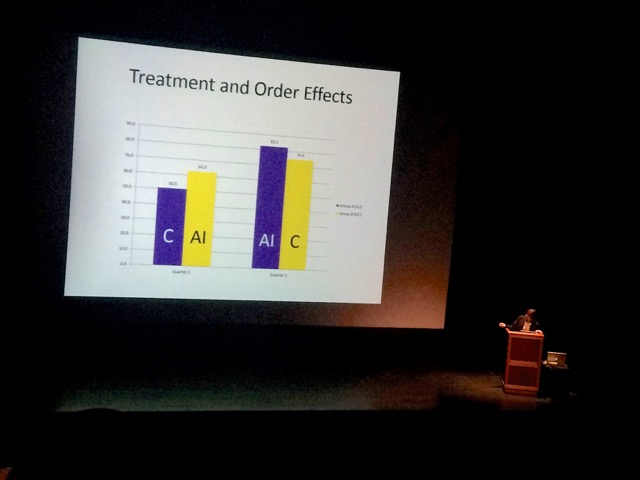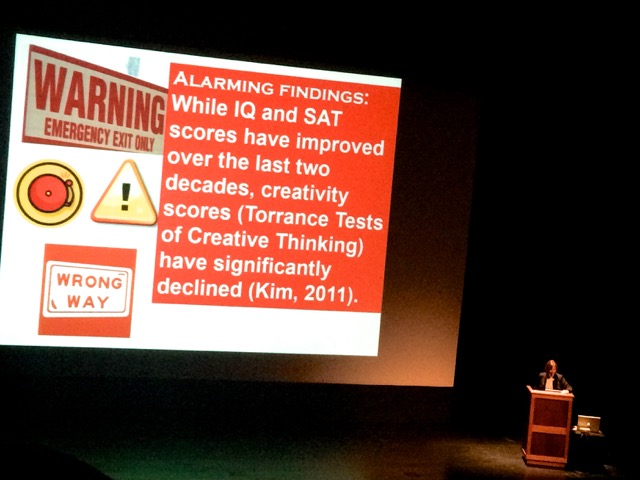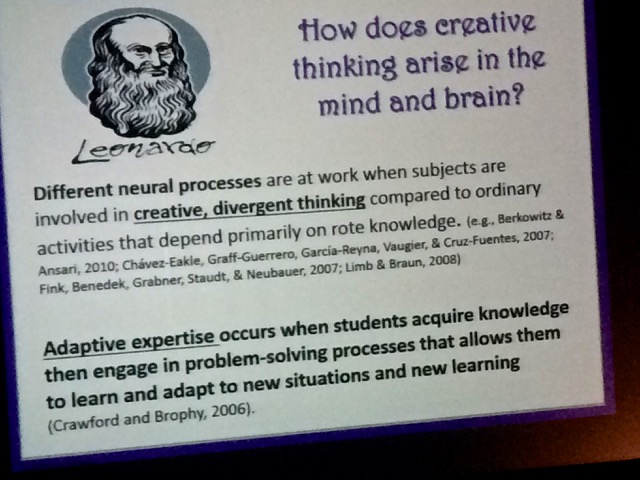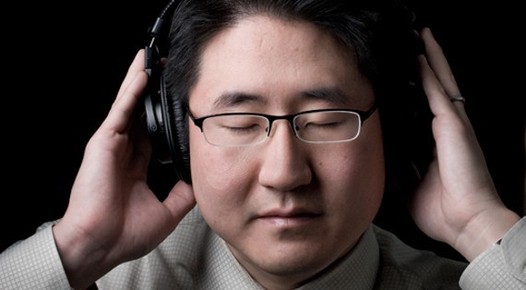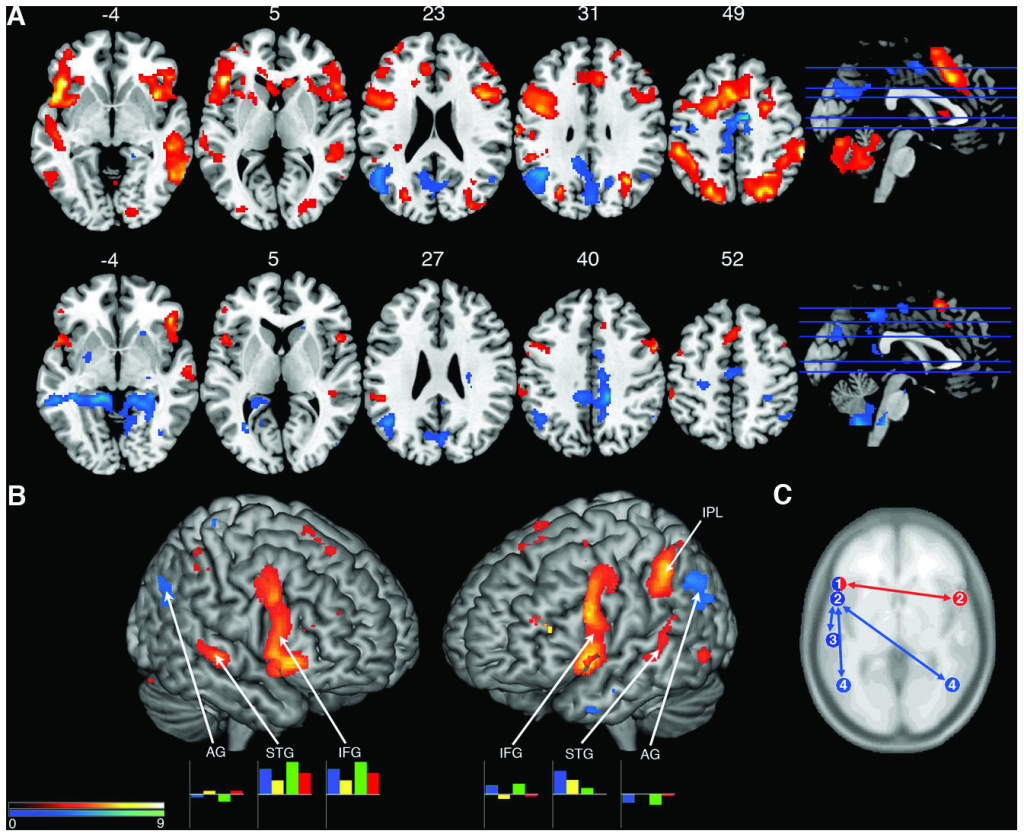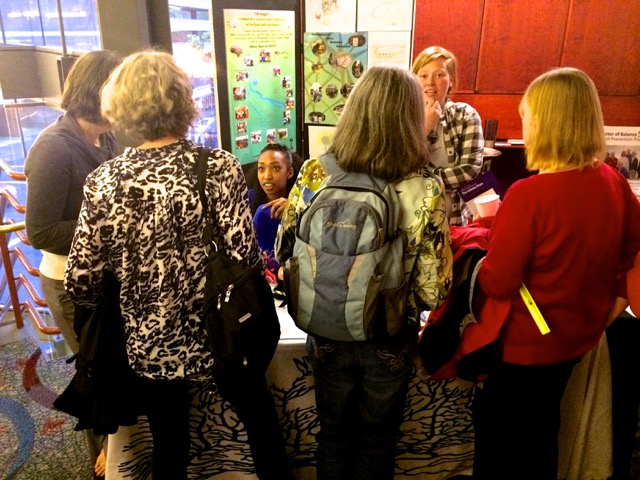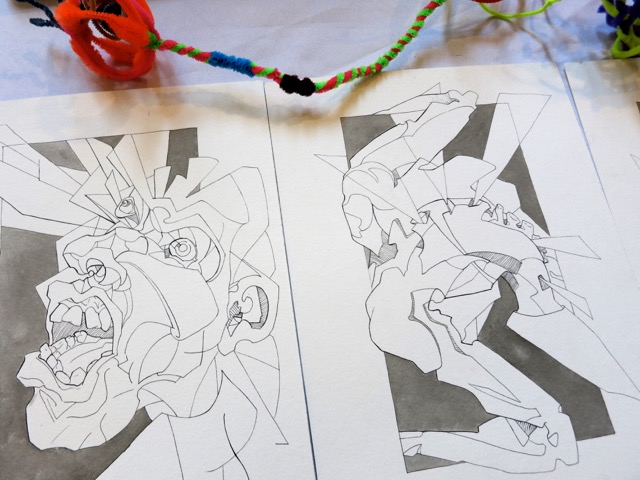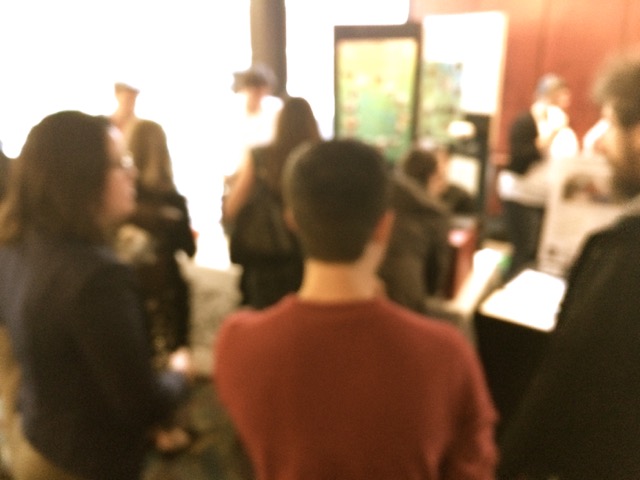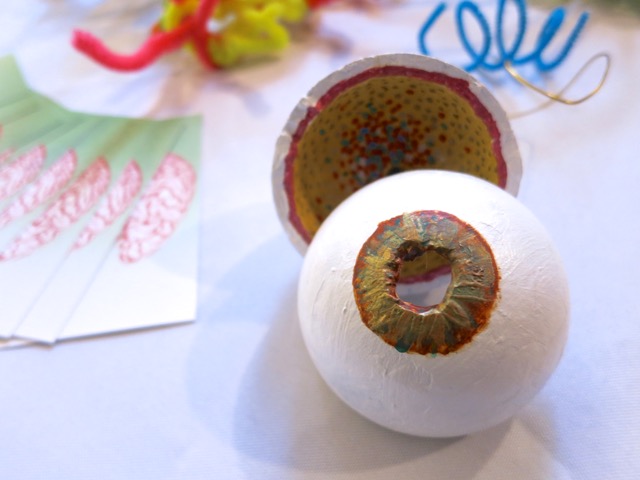Our creative Noggin crew, seasoned by a year of brains and art with over 3000 K-12 students, and preparing for more collaborative STEAM outreach this summer, found much to applaud in this final Brain Awareness lecture at Portland’s Newmark Theater…
(Photo by Dan Carter @ www.dancarterphoto.com)
We gathered many of our art, psychology and neuroscience volunteers, now comfortable working together to develop and deliver arts-integrated science instruction, to hear Mariale Hardiman, the Vice Dean of Academic Affairs and Director of the Neuro-Education Initiative at the Johns Hopkins School of Education speak about “Art and the Learning Brain…”
Dr. Hardiman was a teacher and school principal for many years in Baltimore, before pursuing research on the benefits of arts integration in STEM (Science, Technology, Engineering, Mathematics) – now often referred to as the “STEAM” approach…
STEAM is becoming popular – but does integrating art instruction into science classrooms have measurable positive effects on student outcomes..? After several years of hands-on experience in area public schools, we’d place big bets on yes!
Though we are familiar with skepticism surrounding a multidisciplinary approach to STEM – in setting up this year’s summer outreach, for example, we had one university science dean tell us that “you can’t teach science and art in the same classroom!”
As both approaches involve messy exploration, a need for improvisational, creative thinking, many instructive mistakes and reappraisals, and a clear grasp of the relationship between physical structure and function we, along with others, see a lot in common (and we did get that single classroom – with a sink :).
Dr. Hardiman began her talk by describing her own experience as a principal of a troubled Baltimore public school, soon after passage of the “No Child Left Behind” law in 2002.
She cut arts programs, increased reading and math instruction for struggling students, and raised test scores, avoiding some of the draconian cuts and closures threatening other schools. But what exactly were these tests measuring? Whom did they benefit? And what was lost with cutting the arts..?
Dr. Hardiman suggested that our zeal for a strong, intense focus on reading and math, and the wholesale discounting of arts in public education that followed implementation of the NCLB law, may qualify as a potentially damaging “cultural myth.” She mentioned some other previously held, highly popular beliefs, which were later found to be less than accurate, or ideal, after further research…
And she knew something essential was missing, despite improving test scores. At the Newmark, she referred to herself as a “reformed” school principal – once budgets recovered, Dr. Hardiman restored the arts to Roland Park Elementary and Middle School and, as she described it, “the hallways exploded with art content that had to do with learning…”
(From our Harrison Park summer outreach program, 2014)
In subsequent years, Dr. Hardiman developed a brain-targeted teaching model, and now advocates for inclusion of neuroscience concepts of plasticity, the potential for neurogenesis, the toxic effects of long term stress, poor nutrition, and lack of sleep on cognition, and an understanding of “critical” or “sensitive” periods of brain development into quality teacher training programs.
She summarized some of this work in a TEDx Talk from 2012…
In her talk, Dr. Hardiman emphasized support for the arts, “for arts sake”; however, there is also a growing body of research documenting improvements in retention of content, for example, when arts projects are fully integrated into STEM – at least partly because these projects involve rehearsal, elaboration, generation, enactment, etc., which all contribute directly to long term learning.
However, most research studies in this area are correlational, and so, drawing on her contacts in the Baltimore Public Schools, Dr. Hardiman and her colleagues set out to run a randomized controlled study of students taught with and without arts integration…
Teachers in this study (Hardiman, et al 2014) taught either astronomy or environmental science in both arts integrated (AI) and conventional formats…
In the control (non-arts integrated) condition, students gave traditional classroom presentations, while in the arts integrated condition, students had to create and deliver content in the form of dance. For example, students described the differences between solids and liquids with a series of movements to generate a final frozen image, or tableau…
Those in the conventional classrooms also wrote, while AI students drew; conventional students conducted text analysis, while AI students engaged in visual analysis, etc. The study authors found clear advantages for those in the arts integration groups…
And interestingly, arts integration most improved learning and retention of content for those students who started with the lowest proficiency, as measured by standardized tests. Of course, No Child Left Behind led to cuts in arts education, particularly in struggling schools with fewer resources, and with more students failing to pass those same standardized tests…
Also, there were significant order effects in this study, with students who received the arts integration during the first teaching block performing better in the second block in the control condition. It was, said Dr. Hardiman, as if students had absorbed some useful skills from their arts education experience that transferred over to the conventional classroom…
And what about those standardized tests, that require significant classroom time for preparation? According to Dr. Hardiman, there is evidence that while test scores have improved, delighting politicians and relieving some administrators, measures of student creativity are in decline…
Part of the problem might be this narrow, accelerating focus on standardization, and the “only one right answer” approach common in our current system of education and assessment.
Some parents may be familiar with more restrictive approaches to math, for example, where kids are rewarded for following a specific, often patented, multi-step process to find a result, and are penalized for taking creative leaps that also work just fine…
But what is creativity? How is it impacted by a focus on specific, memorized, rote responses? Dr. Hardiman highlighted the exciting work of her colleague, Charles Limb, who observed accomplished jazz musicians in an fMRI scanner, and compared the brain areas active when they played something memorized, versus areas engaged by creative, improv performance…
Dr. Limb found that when improvising, there was increased activity in medial prefrontal regions important for reflective, autobiographical, self-referential experience. In contrast, lateral pre-frontal regions decreased their level of activity, and these are areas critical for self-censorship, self-monitoring, and inhibition of emotional expression…
If you are curious to learn more, Dr. Limb has a TED Talk available here…
However, the current focus on standardized tests, and the expensive textbooks required to prepare students, developed by companies diverting public money from struggling public schools, may in fact be restraining the creativity that more young people actually need…
After a stimulating lecture we returned to our NW Noggin table, covered with examples of student artwork reflecting neuroscience content, from multiple outreach efforts. There we spoke with many audience members inspired by Dr. Hardiman’s talk…
Our thanks to Bobby Heagerty, Kate Stout and Laura Graham of the OHSU Brain Institute, for generously including our undergraduate and graduate volunteers from OHSU, WSU Vancouver, PNCA and PSU in these outstanding, educational public events…



